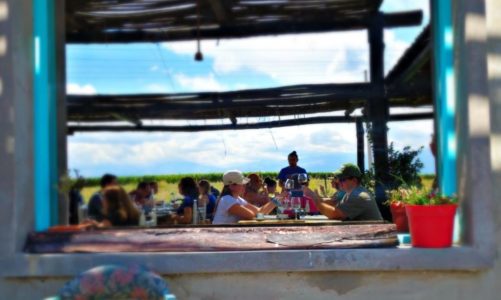Recently completing the Camino de Santiago, surprisingly one of our biggest challenges was finding fresh, healthy meals along the way. If you are truly a health-conscious eater, you quickly realize that much of Spain’s everyday cuisine is highly processed and quite monotonous.
Sure, Spain offers some great high-end dining opportunities—that is, affluent travelers may have differing opinions about Spanish cuisine from those who travel on a budget. However, those who can’t afford luxury eating will struggle with eating clean and fueling their bodies with natural foods and quality ingredients.
How to Eat Clean on the Camino de Santiago
This guide provides inspiration and clean meal suggestions to assist you when you find yourself uncertain about what to eat while navigating the grocery store during your Camino. If you normally follow a restrictive diet at home, one of the most important things to remember during this adventure is to simply do the best you can.
Before delving into clean eating on the Camino de Santiago, let’s briefly address a crucial element of maintaining health on the Way: acquiring appropriate pilgrimage travel health insurance.
⚕️❤️ How To Protect Yourself On Your Camino
Indeed, the term “pilgrim” on the Camino de Santiago transcends purely religious connotations. While some embark on the journey for spiritual reasons, others seek personal growth, reflection, or cultural experiences. Regardless of motivations, the shared experience of walking this historic route fosters a sense of community and common purpose among all travelers, leading to the universal designation of “pilgrim” for anyone undertaking the transformative journey along the Camino de Santiago.
Having proper pilgrimage insurance on the Camino de Santiago is indispensable, addressing both food-related health issues and physical injuries. It provides essential coverage for medical expenses, whether it’s illness from local cuisine or injuries during the pilgrimage, ensuring access to quality healthcare and financial reassurance in remote areas. We’ve done tons of research regarding travel insurance, here’s a link to the company we use for pilgrimage insurance.
Do Your Best
You will inevitably face scenarios where deviating from your usual diet becomes necessary. Despite initial intentions, exhaustion and low energy levels may lead you to consume anything available for a quick energy boost.
For example, there are reports of vegans deviating from their plant-based diet due to the lack of any other options in remote areas. Other hikers will prioritize convenience and physical energy needs over dietary restrictions.
When not on the go, we try to be selective in what we eat and drink. However, during our walk, we embraced flexibility in our diet and tried not to go too hard on ourselves.
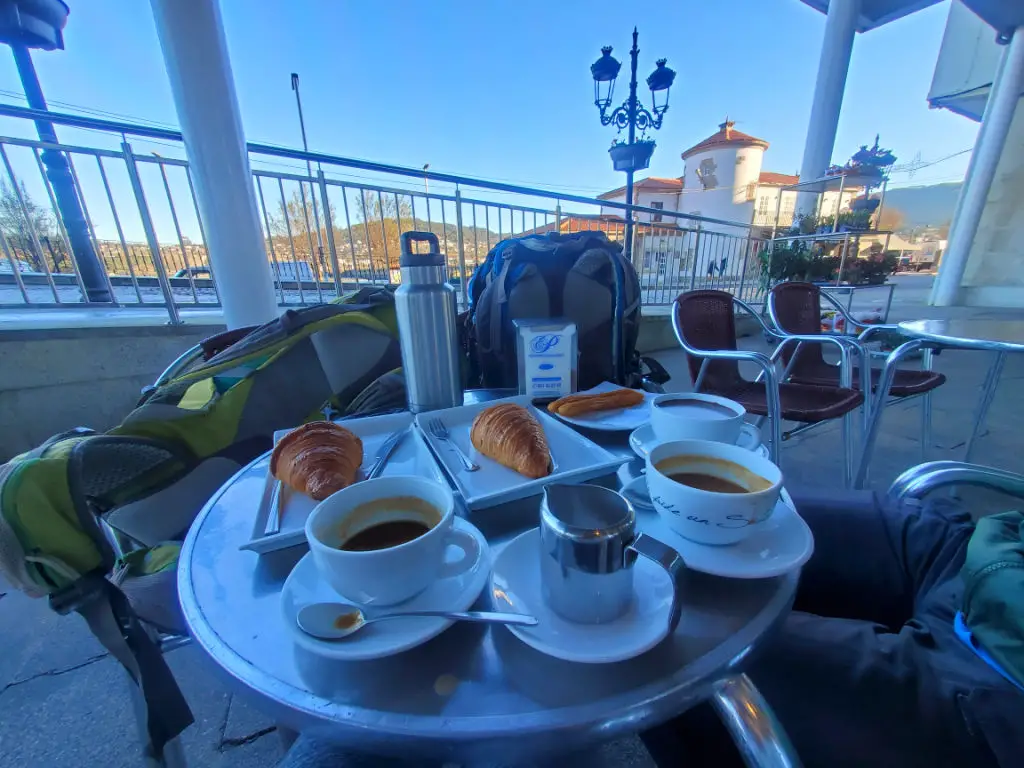
To illustrate, during a questionable hostel stay in Puentedeume, we had no choice but to get breakfast in town. We enjoyed two coffees, hot churros, flakey croissants, and warm dipping chocolate as we watched the town come alive.
It became one of our cherished mornings along the Camino. The delightful Spanish-style breakfast provided the perfect fuel for the challenging ascent early in the day. Adhering to the motto of doing only the best you can at each stage of the journey makes a “cheat meal” a little easier to swallow.
Plan Ahead
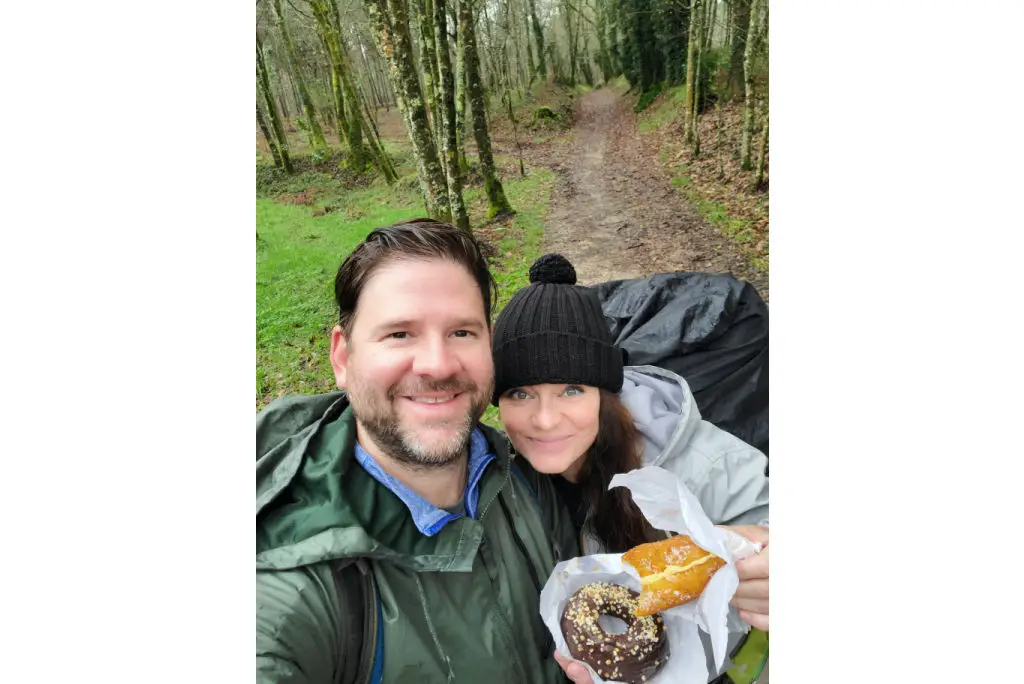
Unfortunately, most stores in Spain are closed on Sundays. This adds another challenge to those looking to eat clean by preparing their own meals. It helps to ask accommodation hosts if they are aware of any shops or bodegas that are open on Sundays. Overall, we thought Lidl and El Corte Inglés offered the most variety of healthy food options.
Choose Kitchens When Possible
On our Camino, we stayed in a combination of apartments, hotels, and albergues. When possible, we’d choose an accommodation with a kitchen to make preparing dinner, breakfast, and the next day’s lunch much easier. Consider that dining out can be pretty pricey in Spain. In our opinion, paying for accommodation with a kitchen offsets the cost of eating out—and it’s much healthier.
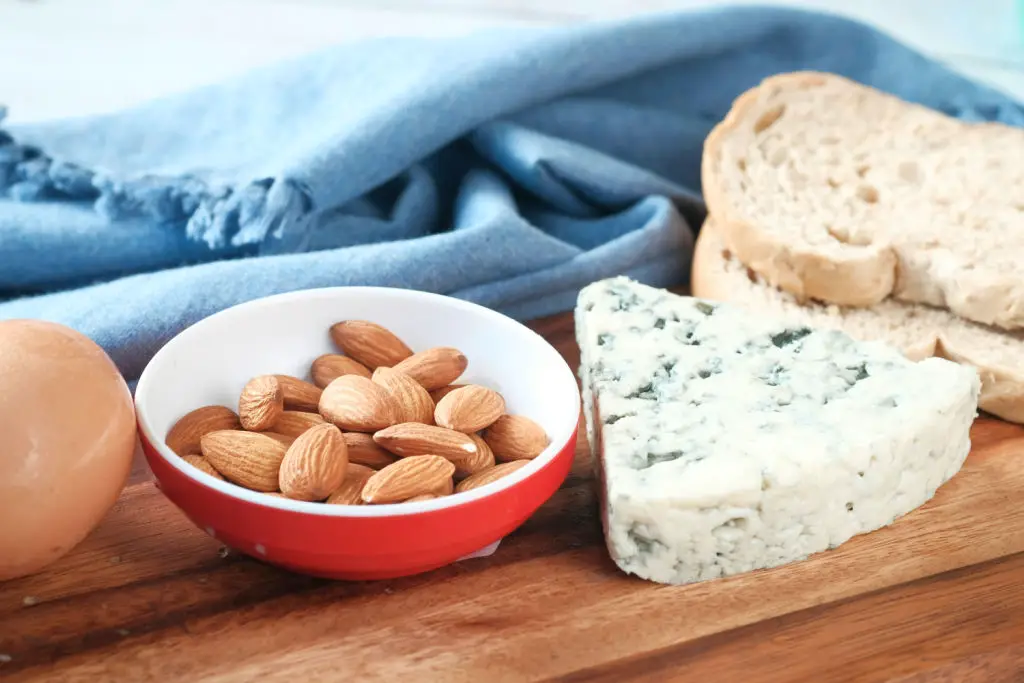
Why Are Camino Kitchens Closed?
Pilgrims on lengthier walks will likely stay in more affordable albergues. However, in recent years, community kitchens across the various Camino routes have limited, or sometimes even banned, the option for hikers to prepare meals in albergues. Furthermore, pilgrim kitchens that permit “cooking” may only provide a microwave, basic utensils, and a refrigerator.

Reasons for the closing of communal kitchens have been attributed to many factors so it’s hard to pinpoint the cause. Threads and Camino aficionados cite various reasons. These include COVID-19 protocols, government energy consumption regulations, financial costs, and poor pilgrim behavior such as stealing kitchen supplies and refusing to clean up after themselves.
Galicia’s Struggle
Spain’s Galicia region has a reputation for having the worst amenities for pilgrims. Personally, the one albergue we stayed in on the Camino closed off access to the kitchen mess, leaving us with only a toaster and refrigerator. The heat was also shut off in our room after midnight in the middle of December.
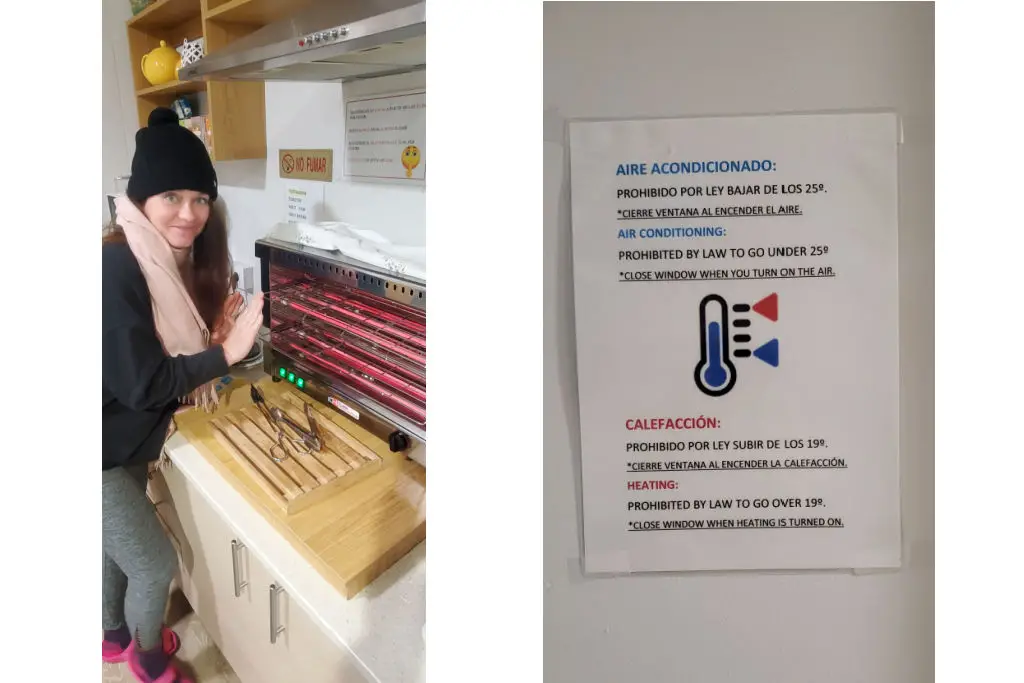
Question Pork Consumption
Please know in advance that for health reasons we no longer eat pork or processed pork products in any form. Unfortunately, swine plays a significant role in Spanish cuisine with jamón the primary meat source for sandwiches, pizza, croquettes, tapas, and empanadas.

If you avoid pork or are a vegetarian, the Camino Frances will be the easiest route for those with alternative diets. Alternatively, the Via de Plata Route, which runs from Seville to Santiago, will be the hardest. This particular region of Spain practically celebrates swine, with a pig being the icon of choice on village emblems, flags, and coats of arms.
Fortunately, while options along the Camino become even more limited once pork is eliminated, it can be done.
Use a Clean-Eating Tool

Those who follow the clean-eating movement may already be aware of Yuka. This free mobile application allows people to scan barcodes to quickly and easily see a product’s ingredients, including harmful additives and nutritional quality. It also shows how risky it is to consume the product.
Developed by a trio of young French entrepreneurs, the app works in the United States, Spain, and France. Yuka helped us monitor our eating on the Camino de Santiago and throughout our time in Spain.
Limit Frozen and Mass-Produced Items

Hikers, take a close look at menus in Spain. Most, if not all items offered are pre-frozen and processed. For example, it was nearly impossible to find a pizzeria that wasn’t purchasing premade dough (pizza crust).
Also, those calamari rings on just about every menu aren’t freshly breaded squid in the kitchen; they’re likely pre-packaged. The impeccably frosted donuts and palmeras you spot in bakeries? They’re boxed items from large distributors, essentially Sysco food.
Look for Artisan Bakeries
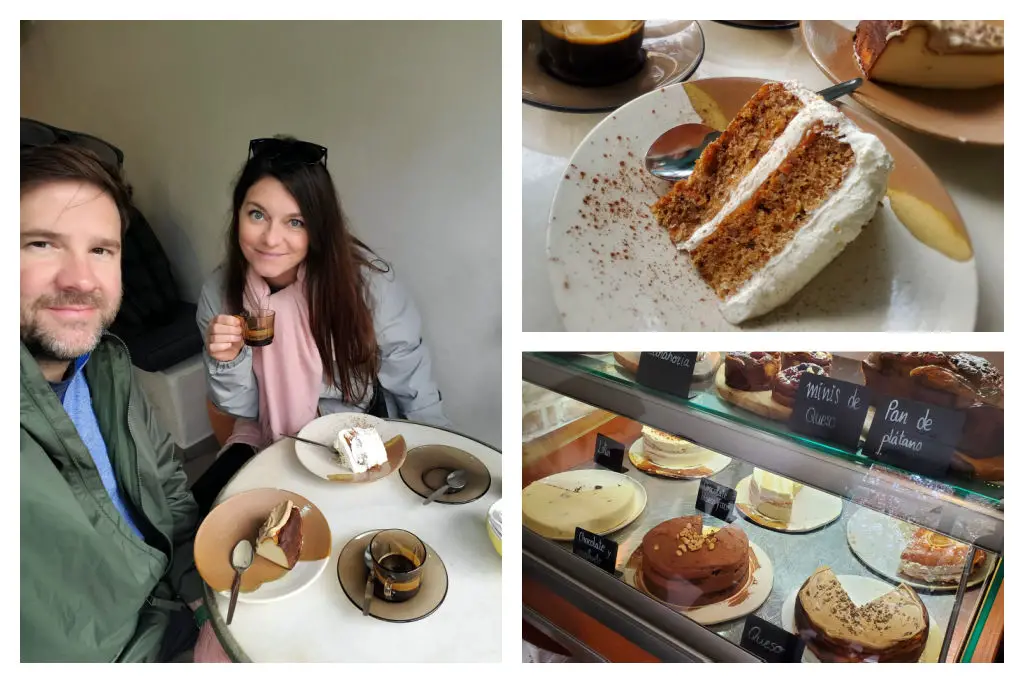
While truly few and far between, look for local pastry shops and artisan bakeries. Quality bakeries are typically identified by small-batch goods with imperfect toppings, slightly higher prices, and unique products.
Stay away from individually wrapped cakes and items that look uniform and identical. The more half-hazard and inconsistent the better. Bakeries that buy and sell in bulk are merely selling you premade food, full of additives, preservatives, chemicals, and other cheap ingredients.
Avoid Climate-friendly Milk

Recently revealed, climate-friendly milk is now on grocery store shelves around the globe. To reduce emissions, livestock are given Bovaer, a toxic chemical meant to reduce methane in the form of cow farts and burps.
According to the European Food Safety Authority, the substance is deemed safe. However, citizen journalists researched and quickly determined that the additive is labeled as a health hazard that affects fertility and unborn children. Pay attention to where your dairy is sourced and learn more about finding a clean source of milk worldwide.
Healthy Camino Food Options
So what’s a health-conscious hiker to do? Naturally, sticking to as many one-ingredient foods as much as possible is a good strategy. Additionally, some travelers may want to consider a travel-sized reverse osmosis water filter to bring along on their journey.
The list below offers some suggestions on how to eat clean while walking your Camino.
Fruits with Peels

APEEL coatings and Bill Gates’ Rainforest Alliance foods are now on store shelves across Europe. If you trust Bill Gates and anything related to his foundation, feel free to consume his products. If you don’t, then stay away from fruits and foods with the green frog label.
Generally, fruits with peels offer less exposure to toxic substances. Better options include Canary Islands bananas, kiwi, mandarins, pineapples, and mangoes.

Additionally, one of our travel hacks is to save money by grabbing extra produce bags or brown paper bakery bags to wrap up your fruits and sandwiches while hiking.
Cheeses

On our Camino, we found that cheese was one of our best options for healthy meal planning. It’s portable, tasty, and pairs well with other snacks. For example, consider cheese sticks with nuts, blocks of cheddar with crusty bread, and feta cheese paired with tomatoes, cucumbers, onion, and a dash of salt are all good choices.
Nuts
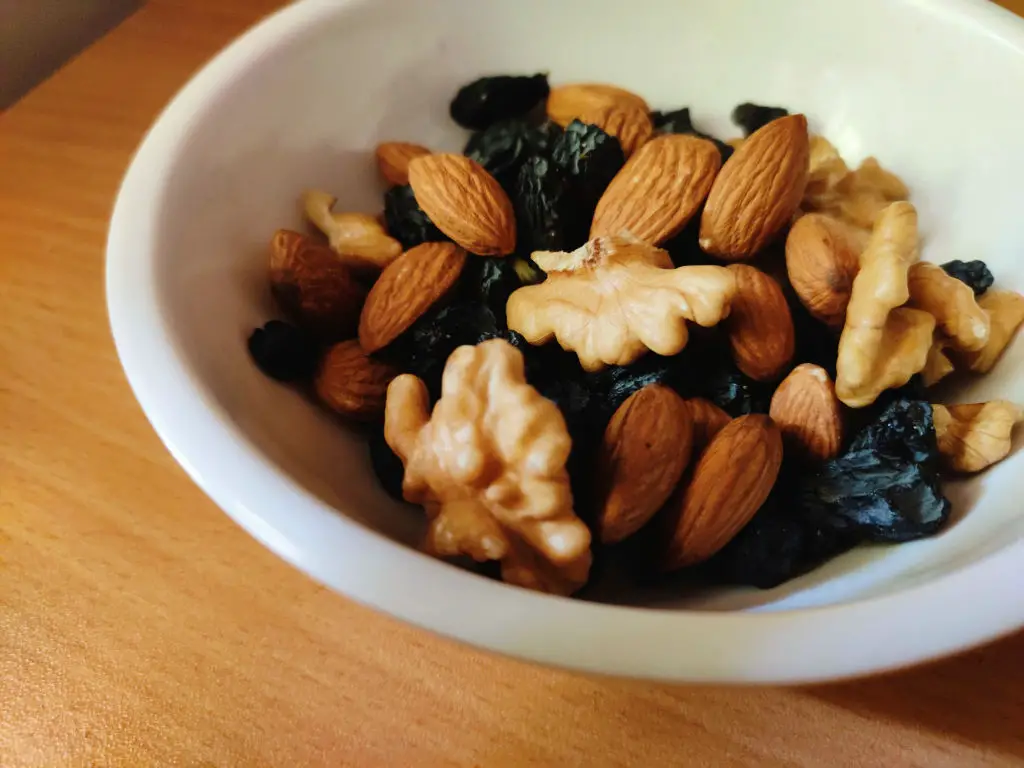
Eating nuts on the Camino de Santiago can be a nutritious and energy-boosting choice for pilgrims embarking on this long-distance trail. In Spain, almonds, pistachios, and walnuts are widely popular and are surprisingly inexpensive compared to other parts of the world. Lidl stores devote entire rows to bagged nuts and trail mixes.
Dried Fruits
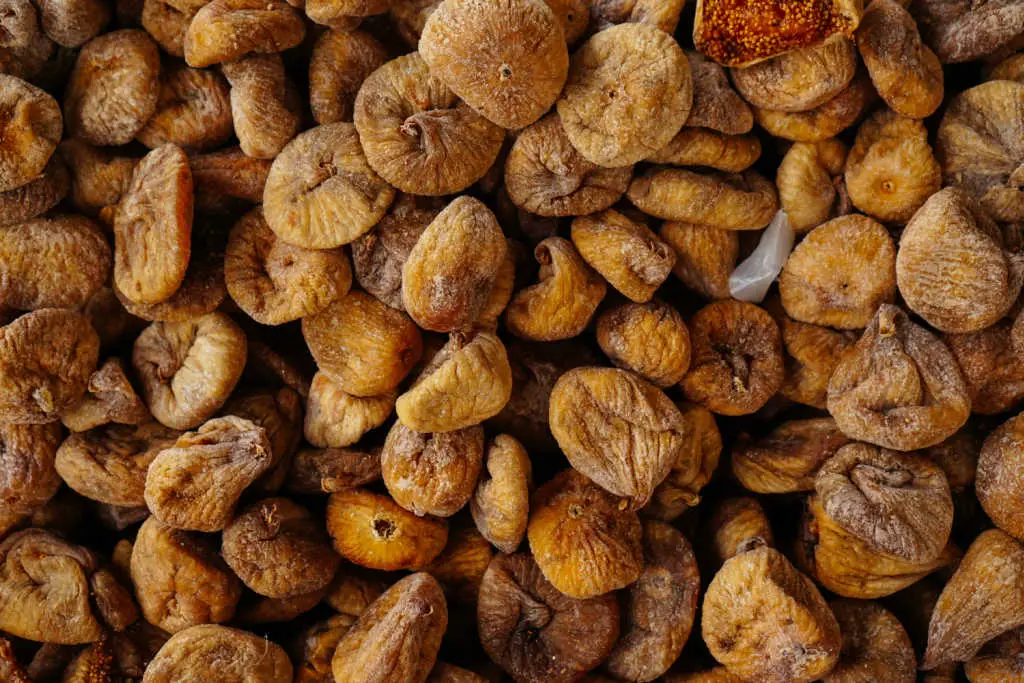
Apricots, figs, banana chips, and raisins are travel-friendly and offer natural sugars for a quick energy boost. Dried fruits are a favorite snack choice due to their portability, concentrated nutrient content, and convenience when hiking.
Quiches and Omelets
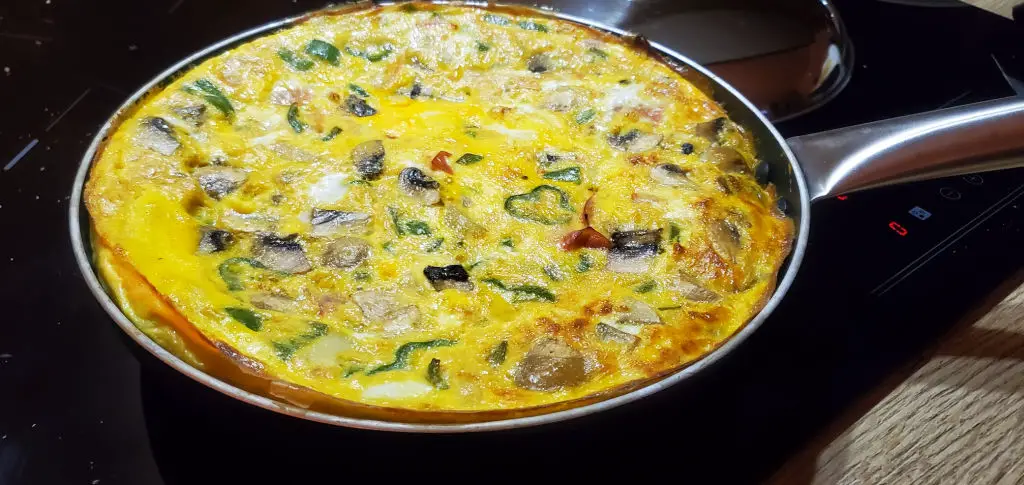
One of our favorite travel meals is a hearty quiche. Paired with bakery bread, purchase the best-looking vegetables available at the time. Some ideas include mushrooms, onions, peppers, cubed zucchini, and diced tomatoes. After baking in an oven-safe pan, or cooked on low in a covered pot, we top with crumbled feta cheese. This is our favorite go-to meal on the road.
Sweet Potato with Plain Greek Yogurt

With microwaves being a common albergue staple, a piping hot sweet potato can be a nice addition to any meal. To cook a sweet potato in the microwave, wash and pierce the sweet potato with a fork, place it on a microwave-safe plate, and microwave on high for 5 to 8 minutes or until tender, rotating halfway through if needed. Top with some plain Greek yogurt and whatever spices are available in your hostel. Salt, pepper, and cinnamon are some good options.
Smoked Salmon Sandwich

When staying in hotels without access to cooking facilities, sandwiches often become the preferred choice for hikers. Opting for smoked salmon provides a favorable alternative to the widely available processed ham in Spain. Layer bakery bread or a clean rye with cream cheese, red onion, avocado, and slices of cucumber. Even better, if you’re a solo hiker, it’s likely that the ingredients will suffice for both dinner and the next day’s lunch.
Chicken Caprese Sandwich
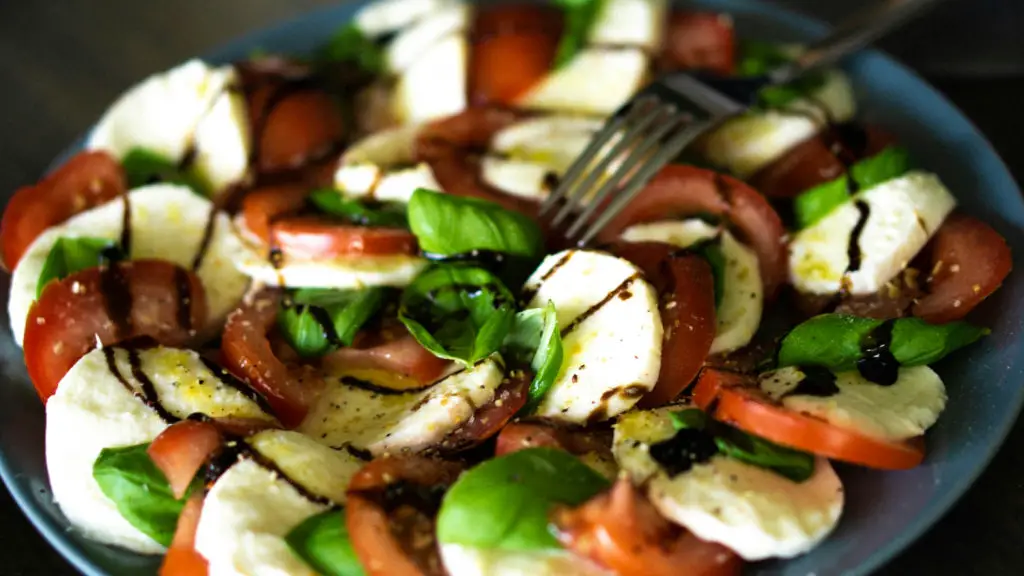
Using fresh, simple ingredients yet full of flavor, a Caprese sandwich will hit the spot, especially after a long day of summer hiking. Use any combination of mozzarella balls, tomatoes, red onion, fresh basil, pesto, and packaged deli chicken. Our albergue offered olive oil, balsamic vinegar, and spices so we used those to top our sandwich.
Plain Greek Yogurt
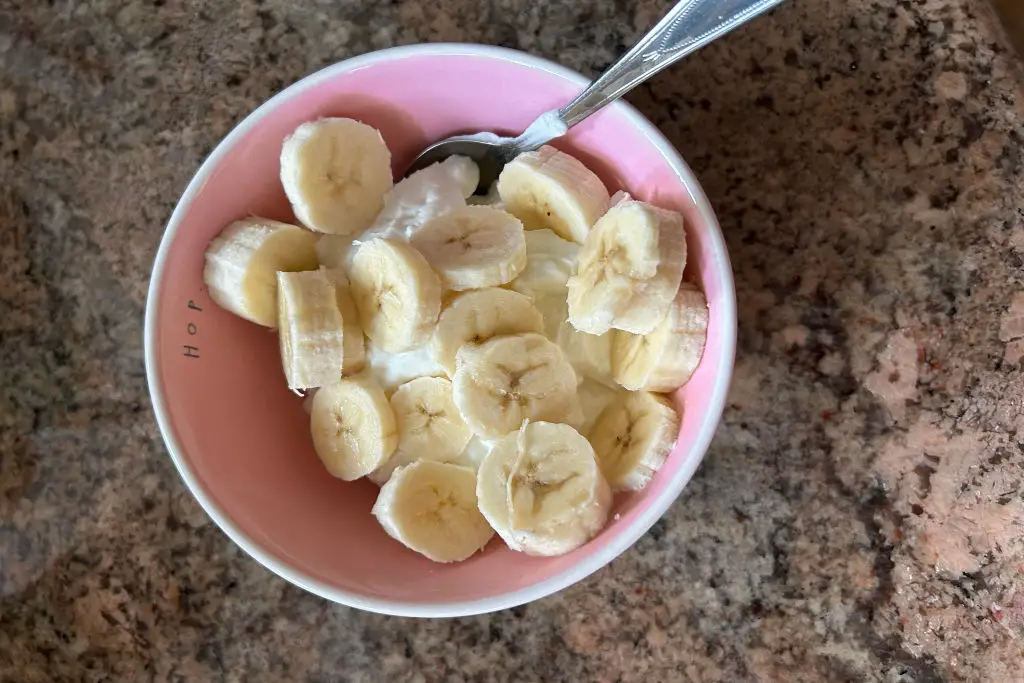
Plain Greek yogurt is a great choice for breakfast due to its high protein content, and probiotics, while also being free of added sugars often found in flavored alternatives. Add a Canary Island banana, nuts, or berries for a more complete breakfast or after-dinner dessert.
Hard-boiled Eggs

If you have access to a stove, then hard-boiled eggs are a great portable snack option with a rich source of high-quality protein, containing essential nutrients like vitamins B12 and D. Sometimes, prepackaged eggs are available in the refrigerated deli section.
Trail Mix
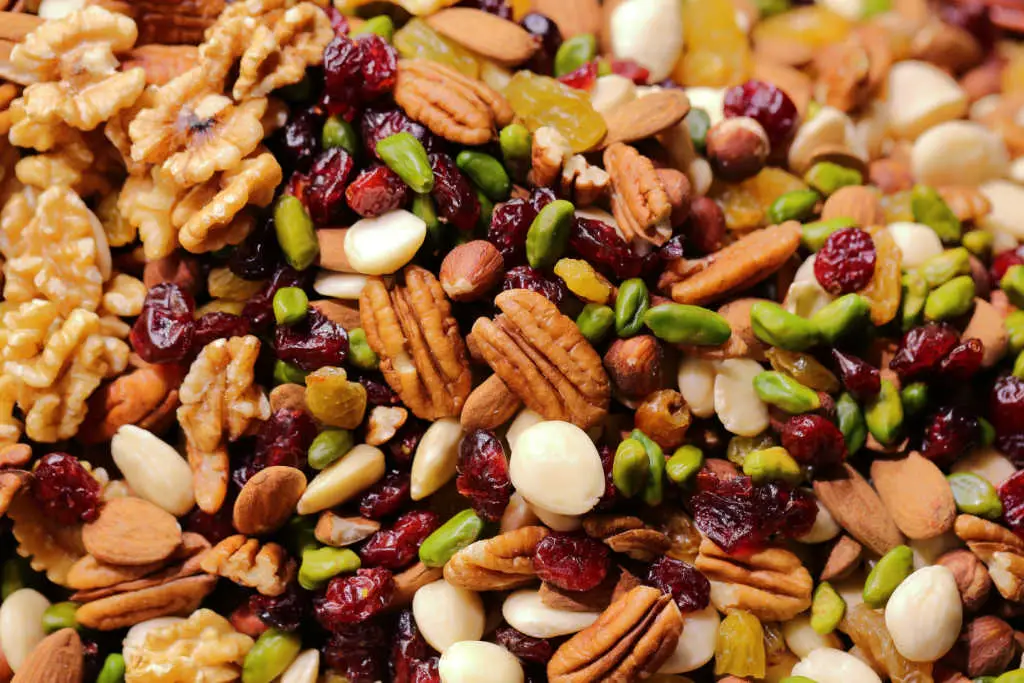
Lightweight and satisfying, a combination of nuts, seeds, and dried fruits provides a mix of healthy fats, protein, and carbohydrates for sustained energy. It’s the perfect snack to fill your portable stash jar.
Pizza Bread
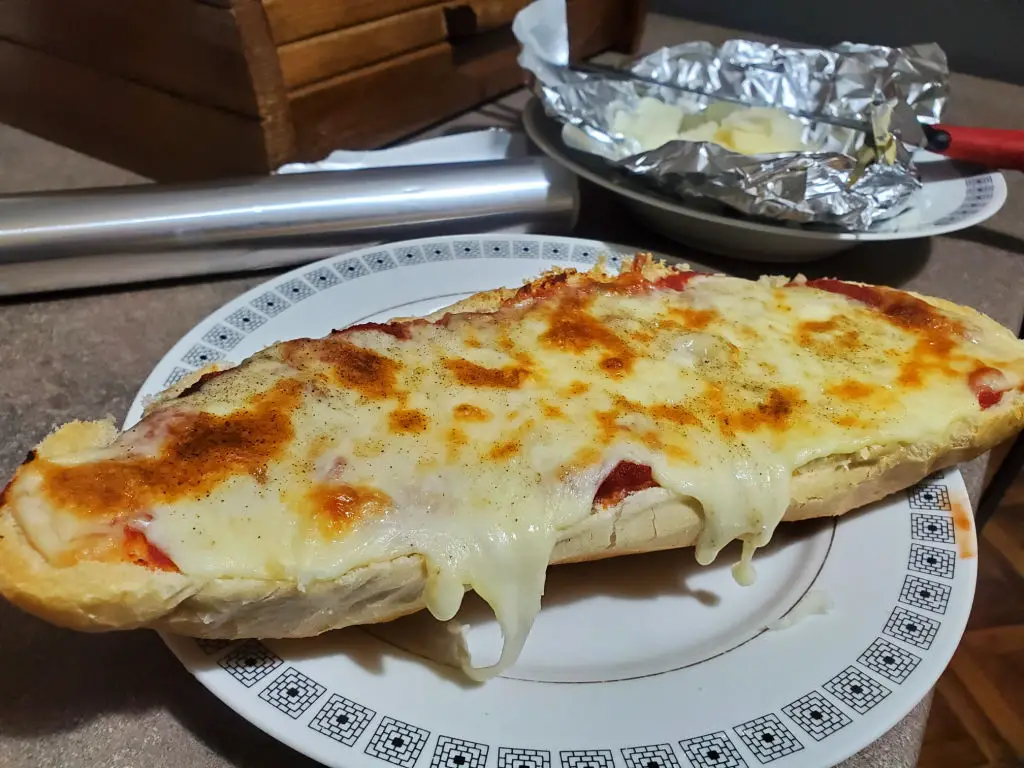
With bakery bread being inexpensive, light, and abundant, one of our favorite meals to make is pizza bread. The key to this dish is trying to find a quality pizza mozzarella but any melty cheese can work in a pinch.
Slice a loaf of fresh bread in half, and add red sauce, cheese, and chopped vegetables to make for an easy meal. We typically use onions, thinly sliced tomatoes, and fresh garlic. For an alternative base, try using a red or green pesto mixed with creme cheese. Of course, pizza bread will require access to an oven.
Easy Pesto Pasta
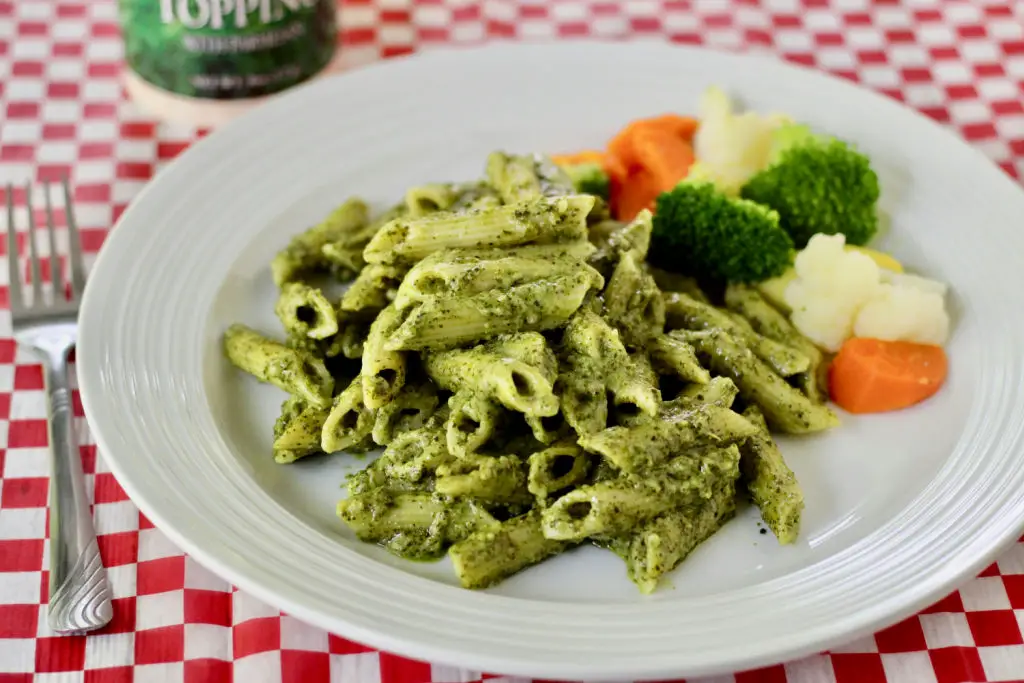
Unlike in the US, most of the cream cheese products in Spain are free of any unhealthy additives. For a simple, yet filling meal, combine a container of cream cheese, a jar of pesto, and about 1/2 cup of saved pasta water for a light and flavorful pasta sauce. Mix with your favorite pasta noodles or refrigerated tortellini or ravioli.
It’s All About Balance
The Camino de Santiago is a physically and mentally demanding journey. For us, one of the most difficult hardships we faced was managing our hunger and nutrition for several weeks, with each day being in a brand-new environment. Food and water are essential elements for hikers, and keeping a proper diet is key to a healthy, happy journey.
It’s easy to get hangry on your Camino—truthfully, we did! Remember that it’s all about balance and each day, simply do the the best you can. Hopefully, these suggestions offer inspiration for pilgrims with a picky palate when hiking their Camino de Santiago. Buen camino!
We Need Your Help
Did you find this article helpful? If so, bookmark it and when you’re planning your next vacation click on any of the links below before finalizing reservations. You’ll get the best price, we’ll earn a small commission, and you’ll help support future articles.
Thank you!
BEST TRAVEL SEARCH ENGINES
🏘️ Book Your Accommodation
We use Tripadvisor and Priceline’s Express Deals to compare prices and reviews in advance and check availability
✈️ Book Your Flight in Advance
To find the cheapest flight options, you can use CheapOAir and Skyscanner to find the most suitable choice for you
🚗 Reserve Your Rental Car
Use DiscoverCars and Skyscanner to compare prices and view the largest selection of vehicles



